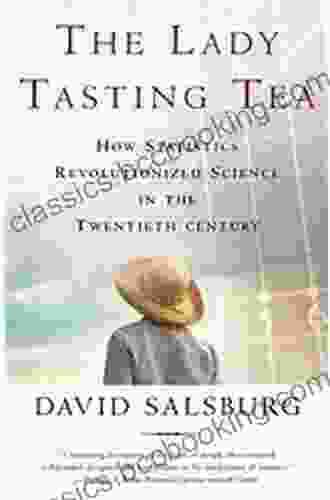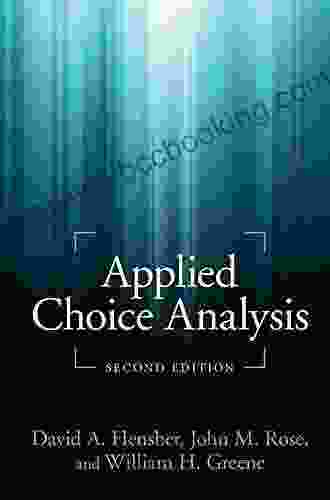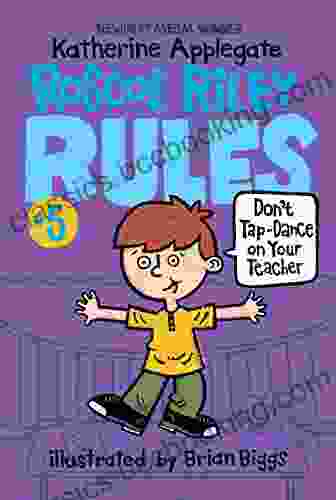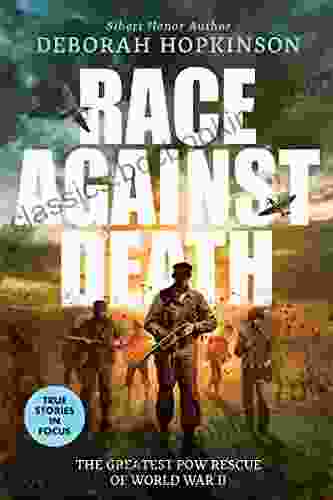How Statistics Revolutionized Science In The Twentieth Century

Statistics has played a pivotal role in revolutionizing science in the 20th century. The development of statistical methods and techniques has transformed our understanding of the world and led to groundbreaking discoveries in various scientific disciplines.
4.3 out of 5
| Language | : | English |
| File size | : | 5002 KB |
| Text-to-Speech | : | Enabled |
| Screen Reader | : | Supported |
| Enhanced typesetting | : | Enabled |
| Print length | : | 354 pages |
The Rise of Statistical Thinking
The roots of modern statistics can be traced back to the 17th century, with the work of mathematicians such as Pierre de Fermat and Blaise Pascal. However, it was not until the 19th century that statistics began to be widely used in scientific research.
One of the key figures in the development of statistics was Sir Francis Galton, a British polymath who is considered the father of modern statistics. Galton developed a number of statistical methods, including the correlation coefficient and the normal distribution. He also applied statistical methods to a wide range of fields, including biology, psychology, and anthropology.
Another important figure in the development of statistics was Karl Pearson, a British mathematician and statistician. Pearson developed the chi-squared test and the correlation coefficient. He also founded the journal Biometrika, which became a leading outlet for statistical research.
The Applications of Statistics in Science
Statistics has been used in a wide range of scientific disciplines, including:
- Biology: Statistics has been used to study the distribution of traits in populations, the effects of environmental factors on organisms, and the evolution of species.
- Psychology: Statistics has been used to study the distribution of psychological traits, the effects of different treatments on behavior, and the development of psychological tests.
- Economics: Statistics has been used to study the distribution of income, the effects of government policies on the economy, and the forecasting of economic trends.
- Medicine: Statistics has been used to study the effectiveness of medical treatments, the risk factors for diseases, and the diagnosis and prognosis of diseases.
The Impact of Statistics on Science
The use of statistics in science has had a profound impact on our understanding of the world. Statistics has helped us to:
- Understand the distribution of traits in populations: Statistics has allowed us to understand the distribution of traits in populations, such as the distribution of height in a population of humans or the distribution of intelligence in a population of students.
- Identify the effects of environmental factors on organisms: Statistics has allowed us to identify the effects of environmental factors on organisms, such as the effects of pollution on the health of animals or the effects of climate change on the distribution of species.
- Develop and test scientific theories: Statistics has allowed us to develop and test scientific theories, such as the theory of evolution or the theory of relativity. Statistics has helped us to determine whether theories are supported by the evidence.
- Make predictions about the future: Statistics has allowed us to make predictions about the future, such as the future population of a country or the future price of a stock. Statistics has helped us to make informed decisions about the future.
Statistics has revolutionized science in the 20th century. The development of statistical methods and techniques has transformed our understanding of the world and led to groundbreaking discoveries in various scientific disciplines.
The use of statistics in science is essential for understanding the world around us and for making informed decisions about the future.
4.3 out of 5
| Language | : | English |
| File size | : | 5002 KB |
| Text-to-Speech | : | Enabled |
| Screen Reader | : | Supported |
| Enhanced typesetting | : | Enabled |
| Print length | : | 354 pages |
Do you want to contribute by writing guest posts on this blog?
Please contact us and send us a resume of previous articles that you have written.
 Book
Book Novel
Novel Page
Page Chapter
Chapter Text
Text Story
Story Genre
Genre Reader
Reader Library
Library Paperback
Paperback E-book
E-book Magazine
Magazine Newspaper
Newspaper Paragraph
Paragraph Sentence
Sentence Bookmark
Bookmark Shelf
Shelf Glossary
Glossary Bibliography
Bibliography Foreword
Foreword Preface
Preface Synopsis
Synopsis Annotation
Annotation Footnote
Footnote Manuscript
Manuscript Scroll
Scroll Codex
Codex Tome
Tome Bestseller
Bestseller Classics
Classics Library card
Library card Narrative
Narrative Biography
Biography Autobiography
Autobiography Memoir
Memoir Reference
Reference Encyclopedia
Encyclopedia David Herriot
David Herriot David Furlonger
David Furlonger Danielle Willkens
Danielle Willkens Daniel Pierce
Daniel Pierce David Clinton
David Clinton Deborah Bull
Deborah Bull Darrell Gartrell
Darrell Gartrell Darren Naish
Darren Naish David Helvarg
David Helvarg Daryl Lane
Daryl Lane Dean Jobb
Dean Jobb Daphne Hicks
Daphne Hicks David G Patterson
David G Patterson David G Cook
David G Cook David Hulett
David Hulett David W Adams Cpa Cfp
David W Adams Cpa Cfp David M Smick
David M Smick David Keyes
David Keyes Deanna Chesley
Deanna Chesley Darren Critchley
Darren Critchley
Light bulbAdvertise smarter! Our strategic ad space ensures maximum exposure. Reserve your spot today!
 D'Angelo CarterFollow ·8.4k
D'Angelo CarterFollow ·8.4k Dwight BlairFollow ·16.7k
Dwight BlairFollow ·16.7k E.M. ForsterFollow ·5.9k
E.M. ForsterFollow ·5.9k Gage HayesFollow ·14.3k
Gage HayesFollow ·14.3k Albert CamusFollow ·17.4k
Albert CamusFollow ·17.4k Samuel Taylor ColeridgeFollow ·5.6k
Samuel Taylor ColeridgeFollow ·5.6k Enrique BlairFollow ·2.7k
Enrique BlairFollow ·2.7k Hamilton BellFollow ·19k
Hamilton BellFollow ·19k

 Cameron Reed
Cameron ReedHow to Know When Language Deceives You
Unmasking the Power of...

 Robbie Carter
Robbie Carter50 Things To Know About Planning Home Schooling...
: The Power of Hands-On Learning Embarking...
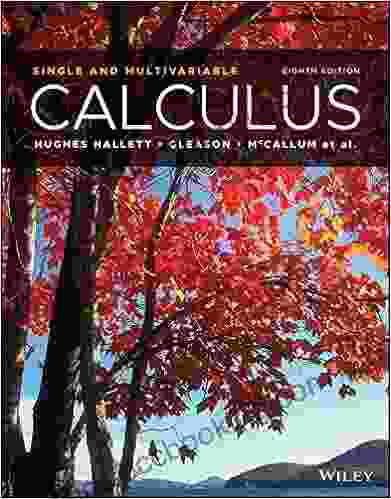
 Julio Cortázar
Julio CortázarCalculus: Single and Multivariable, 8th Edition — The...
Calculus is the...

 Jaime Mitchell
Jaime MitchellBunnicula and Friends: A Spooktacular Tale of Mystery and...
In the quaint little town of Celeryville,...

 Josh Carter
Josh CarterPeppa Easter Egg Hunt: Join Peppa Pig on an...
Get ready for...
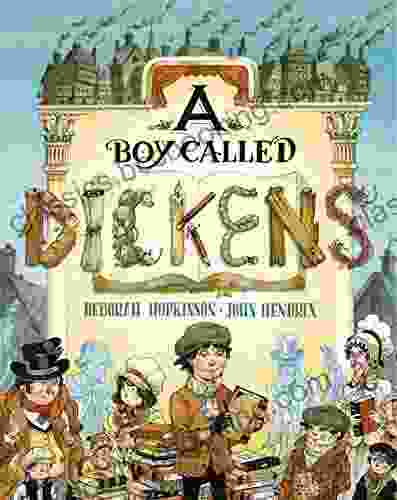
 Donovan Carter
Donovan CarterBoy Called Dickens: A Journey into the Childhood of a...
Delving into the...
4.3 out of 5
| Language | : | English |
| File size | : | 5002 KB |
| Text-to-Speech | : | Enabled |
| Screen Reader | : | Supported |
| Enhanced typesetting | : | Enabled |
| Print length | : | 354 pages |


